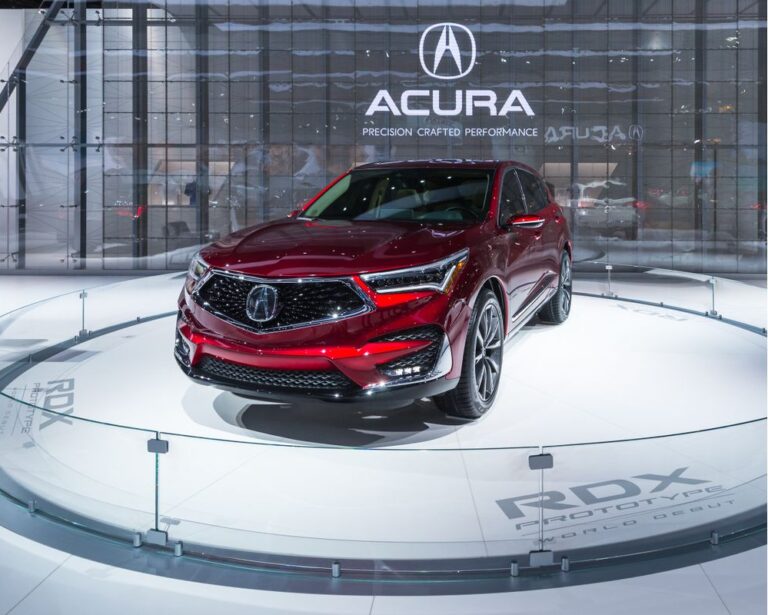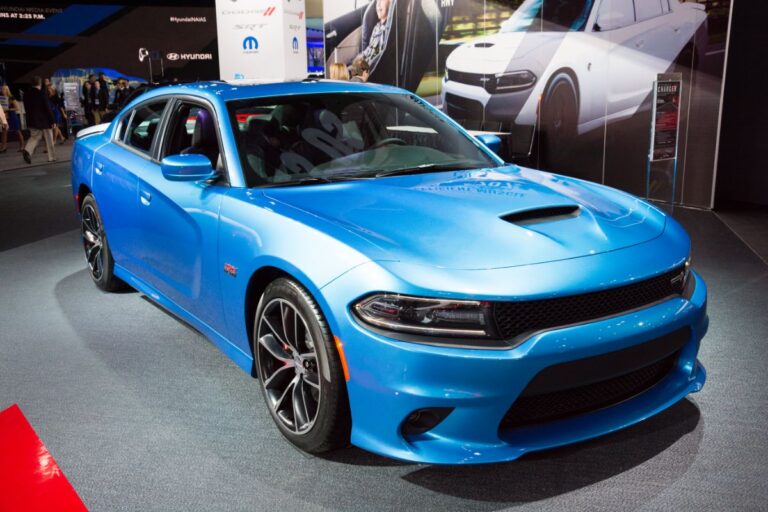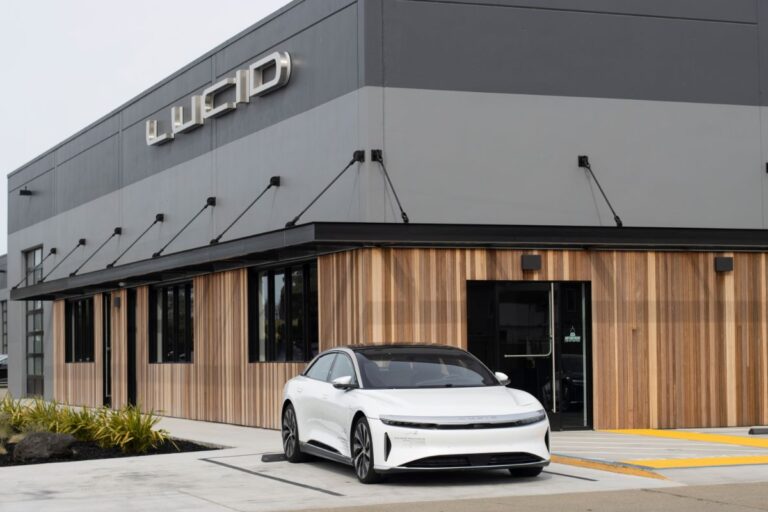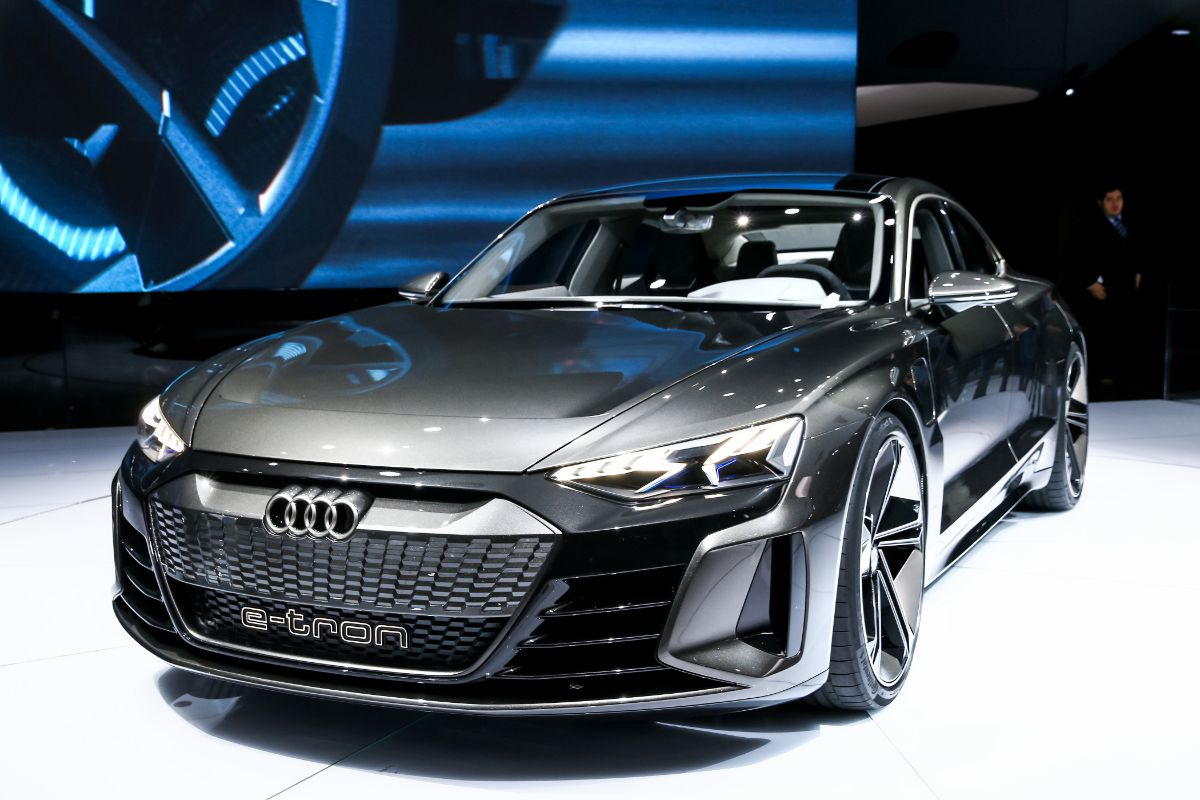
One of the key reservations many traditional automobile lovers have when switching over to an electric vehicle is performance. Electrical engines are seen as something for golf carts and scooters.
The race to improve electrical engine performance is much younger than the one for combustion engines, so the potential of electric vehicles (EVs) may have vastly increased since the last time you checked.
This list stems from the Audi e-Tron GT, including vehicles that are similar in one or more ways, such as performance or economy.
The 2022 Audi e-Tron GT
Official Audi e-Tron GT Website
The e-Tron GT is a luxurious sedan with high performance metrics, like the blistering fast acceleration offered by the 637 hp of the RS version using launch control.
Track testing has shown times consistently at or just below 3 seconds for the 0 to 60 speed on the RS, although Audi lists it at 3.1 seconds. The base e-Tron still has a respectable 469 hp (522 hp with launch control) that hits 60 closer to four seconds.
Both can far exceed highway speeds, with maximums of 152 mph and 155 mph for the base e-Tron and RS, respectively.
A starting MSRP of $102,400 is firmly in the luxury car range, but it’s not so expensive that it’s out of reach. The more expensive RS version starts at $142,400.
Fuel savings will depend on where and how often you drive, but a typical driver can expect a four-figure number that rises with every gas price hike.
The trim lines are mildly confusing with an e-Tron GT trim option for the e-Tron GT, but try to remember that the best trim was so nice that they named it twice. The Premium Plus trim is the basic trim, and the Prestige trim is the middle tier.
A full charge on the battery gets up to 238 miles, losing 6 rated miles on the RS. The battery has a relatively zippy 1.5 hour charge time on a 440V system. For a 220V charger, the battery charges to full in 10 hours, which is fast enough for an overnight charge at home as a daily driver.
The EPA rates its MPG equivalency at 81 MPGe city and 83 MPGe highway for the base GT, dropping to 79 MPGe city and 82 MPGe highway for the RS.
The NHTSA and Insurance Institute for Highway Safety (IIHS) have not yet rated the e-Tron GT. Forward collision warning is a standard feature, but lane departure warnings, crash imminent braking, and dynamic braking support were not.
With the optional driver assist features, the e-Tron adaptive cruise control, lane departure warning, and even autonomous lane control. There are sensors and cameras in every direction.
The Virtual Cockpit isn’t the largest screen, but it is customizable and in the right spot to deliver information without taking the driver’s eyes off the road.
Top 3 Electric Vehicles Similar to the Audi e-Tron GT
1. Porsche Taycan Turbo

Official Porsche Taycan Turbo Website
Porsche’s Taycan line has been out since the 2020 model, and the RS e-Tron GT shares similar metrics with the penultimate offering. The Taycan Turbo starts at a higher price than the RS at $150,900.
Like the RS, it can achieve a 3.0 second 0-60 mph time with the help of launch control technology. The 670 hp doesn’t get the Taycan Turbo to 60 mph any faster than the Audi’s real world speed, but it can hit a higher top speed of 161 mph.
While the e-Tron’s driving range is already on the low end, the Taycan’s base range is even smaller at 212 miles.
With the addition of the Performance Battery Plus, Porsche reports the AMCI testing of the Taycan Turbo’s driving range hits 275 miles, so the real world distance may be better than listed. At face value, the Taycan sacrifices price and economy for slightly better performance.
2. Tesla Model S Plaid

Official Tesla Model S Website
Few vehicles, electric or conventional, can match the speed of the Model S Plaid. Four figures of horsepower propel it to 60 mph in under 2 seconds and past a quarter mile in under 10 seconds.
The driving range is fairly substantial for a performance EV at 402 miles, though pushing that acceleration too much will drop efficiency.
The interior is both minimal and futuristic at the same time, including a large central screen, a steering yoke instead of a wheel, and not much else that makes itself obvious at a glance.
The handling has been reported to be questionable, especially at high speeds, but there’s a fair chance it’s related to the unusual steering wheel and its programming. Otherwise, it’s an absurdly powerful EV that starts lower than the e-Tron at $129,990.
3. Lucid Air Grand Touring

Lucid Motors is a relatively new car company, and the Air is their first offering. The Grand Touring model is the most direct comparison, sitting just below the RS’s starting MSRP at $139,000.
The vehicle surges out of the gate with a top speed of 167 mph backed by an 800 HP engine. On top of a 3.0 second 0-60 time, its driving range is a much healthier 516 miles.
A giant touchscreen panel dominates the area where you’d expect the shifter to be. For future tech, it comes equipped with a host of sensors and a semi-autonomous driving system called Dreamdrive Pro.
Lucid Motors indicated that they will be rolling out future updates to eventually aim towards a fully automated driving experience.
It might feel risky to bet on a company’s first vehicle, but the Lucid Air Grand Touring matches or beats the e-Tron GT everywhere that matters.
Other Electric Vehicles Similar to the Audi e-Tron GT
1. Porsche Taycan Turbo S

Official Porsche Taycan Turbo S Website
The youngest Taycan, the Turbo S, pushes the line’s performance further, surging to 60 mph in only 2.6 seconds. It’s more similar to the Model S Plaid in performance, but the starting MSRP is massively higher at $185,000.
It also suffers from a shorter driving range of 201 miles with the same AMCI testing caveat putting it at 278 miles.
All the bells and whistles of a luxury sedan are here, like Lane Keep Assist, ParkAssist for both directions, and the digital displays extend all the way to the passenger’s side.
If you’re willing to jump up in price to at least $40,000 over the lower tier of luxury EVs, it’s a great buy.
2. Mercedes-Benz EQS
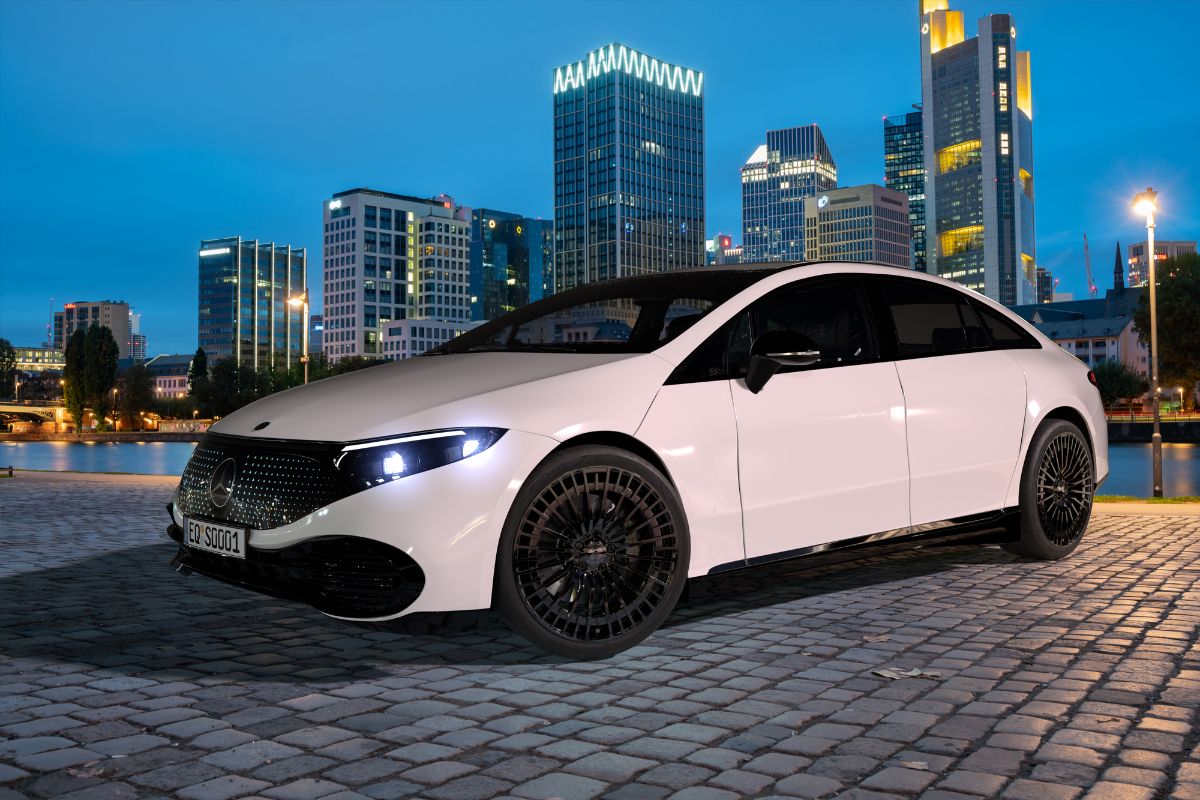
Official Mercedes-Benz EQS Website
By the proposed numbers, the EQS leans more towards luxury and quality than towards performance. With the EQS 580 4MATIC, a 4.1 second 0-60 time is respectable but not groundbreaking.
Nor is the 130 mph top speed. For the average driver, though, those are more than acceptable. The EQS580 will come at a lower final price with a $119,110 starting MSRP.
The exterior body is slightly blunted compared to the e-Tron, but the interior is where the EQS truly excels.
The front panel display stretches across the cabin, supplying a variety of information as needed to augment the driving experience. More driver assist features come standard, so that shaves even more off the final price compared to the e-Tron.
3. Tesla Roadster

Official Tesla Roadster Website
The Roadster hasn’t had a new model in a number of years, and the version that Tesla is promoting is still awaiting finalization and testing to prove its claims.
It doesn’t matter if it’s electric or combustion, being able to hit 60 in 1.9 seconds is an amazing pace, and it hits 100 in 4.2 seconds.
The shocking speed seems even more unrealistic next to the 620 mile driving range that more than surpasses that of most other performance EVs.
It is a sports car instead of a sedan, so there’s less passenger and cargo space. The glass roof and smooth curves lend it a futuristic vibe that reminds me of a Hot Wheels car.
It still looks like a powerful vehicle, but it doesn’t have the strong bonnet and executive feel of the e-Tron or Taycan. Production lines aren’t expected to open until after 2022.
Waiting a few months to see if the new Roadster might be wiser than reserving one before the claims are made, but the specs on paper warrant keeping a close eye on it for anyone who doesn’t need the back row of a sedan.
4. Commuter Cars Tango

Official Commuter Cars Tango Website
While it may look like a sedan that’s been cut in half and compacted, the Tango is an efficient EV with a surprising spryness.
It’s not a great option if you need a vehicle soon, since the waiting list is long, and few have been made so far. It does provide a great look at what future daily driver EVs might look like, since they can hit 60 MPH in 4 seconds and exceed highway speeds with ease.
The NHTSA has rated them as extremely safe in crashes, probably because it’s effectively a roll cage with wheels. It might not have the same machismo as riding a racing motorcycle, but you are less likely to suffer a serious injury.
As the peculiar and small shape does not, cargo space and passenger room are heavily sacrificed to create the slim EV. This is not a car that will serve as a family vehicle, and it’s got a high price tag despite the small size, especially if you rent one of the larger batteries.
Some of that is due to the limited production of the vehicle, but the line is worth a look for anyone who typically drives alone in congested areas.
5. BMW i4

For a fairly negligible drop in top-end performance, the BMW i4 costs significantly less than the top vehicles on this list at $55,400 for the base model and $65,900 for the M50 before additional features.
The same bold style is present in the chassis, so it would be hard for someone not familiar with vehicles to spot the drastic difference in cost.
The driving range is an acceptable minimum of 270 miles, reaching up to 301 miles depending on configuration. A 3.7 second 0 to 60 time is slow for this list, but it still beats a vast number of vehicles in the real world.
Other Vehicles Similar to the Audi e-Tron GT
When you’re shopping for a luxury performance vehicle, keeping a few internal combustion vehicles on the list can help you make the decision with a clear mind.
1. Audi S8

The S8 is a close match for the price and performance of the e-Tron GT from within Audi’s own lineup. The $130,900 starting MSRP is a chunk of change cheaper, and the overall vehicle is a close match in style and features.
It might be surprising, but the S8 underperforms against the RS e-Tron. If you delimited the top speed, the S8 will push to a much higher 190 mph. It’ll still lose to the RS e-Tron off the line with a 3.8 second 0-60 time.
Spending a little less money in the short term doesn’t seem worth it when the real cost might eventually be the embarrassment of losing to an EV in a short race.
2. Audi R8 Coupe

Official Audi R8 Coupe Website
Alternatively, you can drop the extra passenger room and go with the R8 Coupe to come within a couple of tenths of a second to the e-Tron GT’s 0-60 time. If you’re after a high top speed, the R8 is the clear winner with a 204 mph peak.
The V10 chugs through gas at 14 MPG in the city and 23 MPG highway. Between paying for gas and the $148,700 starting MSRP, the actual cost of owning the R8 Coupe will likely be higher than the similarly priced EV.
It can be refilled more quickly, but that can be managed with proper planning. Unless you really need to go over 200 mph or be able to refill in under a minute, there’s no reason to choose the R8 over the e-Tron.
3. BMW M5 CS

The BMW M5 CS has the same luxuriously official look as the e-Tron, and it is near the same price at $142,000 to start.
The 4.4L, 627 hp V8 quickly spins up to 60 mph in 2.6 seconds. 15 MPG city sounds dreary with gas prices continuing to trend upwards overall. A 30 mile commute to work would easily cost into the thousands before any other driving.
As long as you’re willing to burn gas, the M5 CS does outperform the e-Tron GT on the track, so it makes for an excellent comparison.
4. Porsche Panamera Turbo S

Official Porsche Panamera Turbo S Website
At roughly a $40,000 premium, the Panamera Turbo S manages to hit 60 at the e-Tron GT’s real-world 2.9 second testing speed. As with other current combustion versus electric offerings, the top speed is a solidly impressive 196 mph during track testing.
Considering you could pay just a few thousand more and switch to a Taycan Turbo S, it’s again a case where the new luxury EV options are outclassing combustion vehicles in most metrics except top speed – and more EVs are beginning to win that competition, as well.


